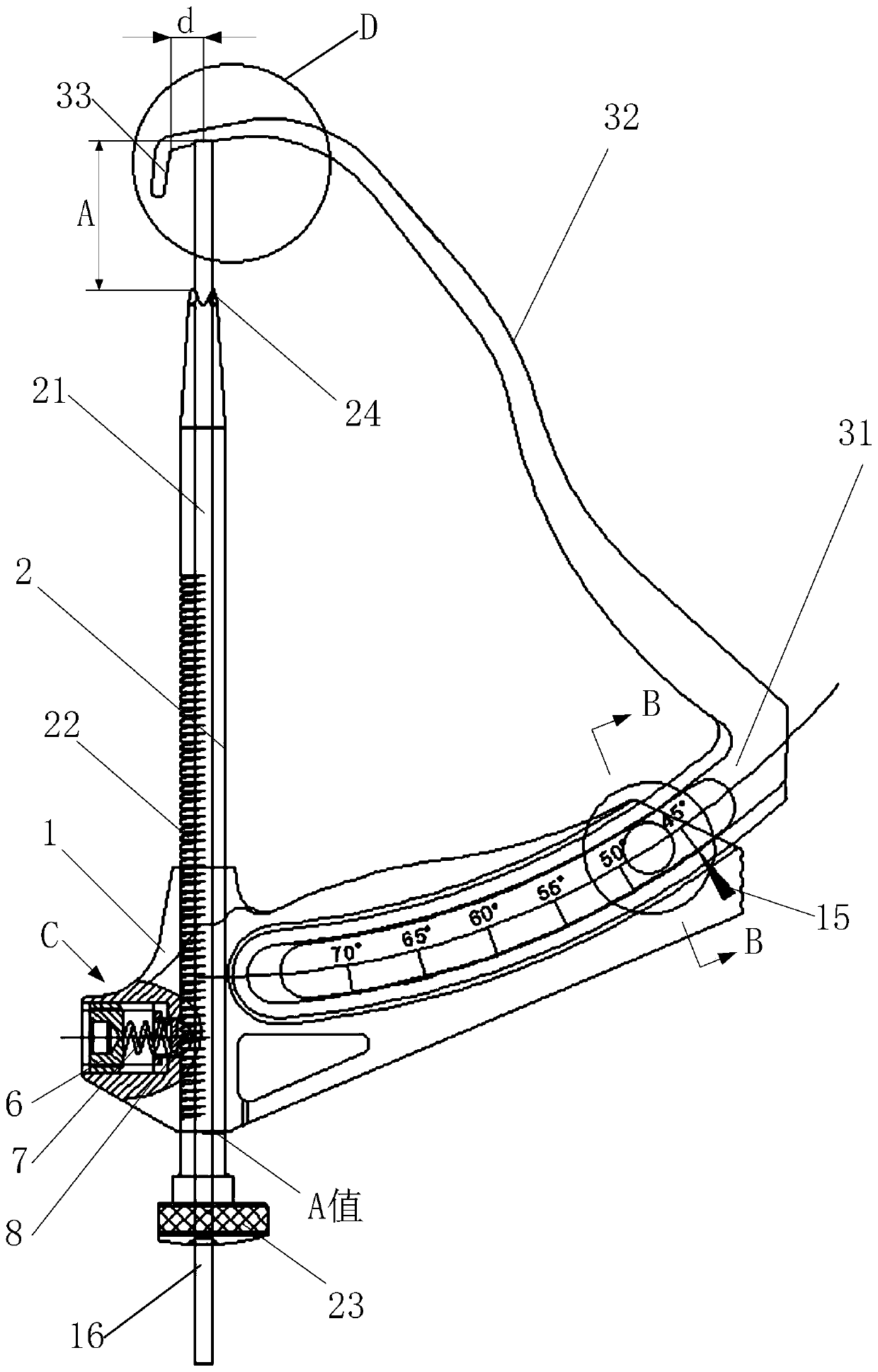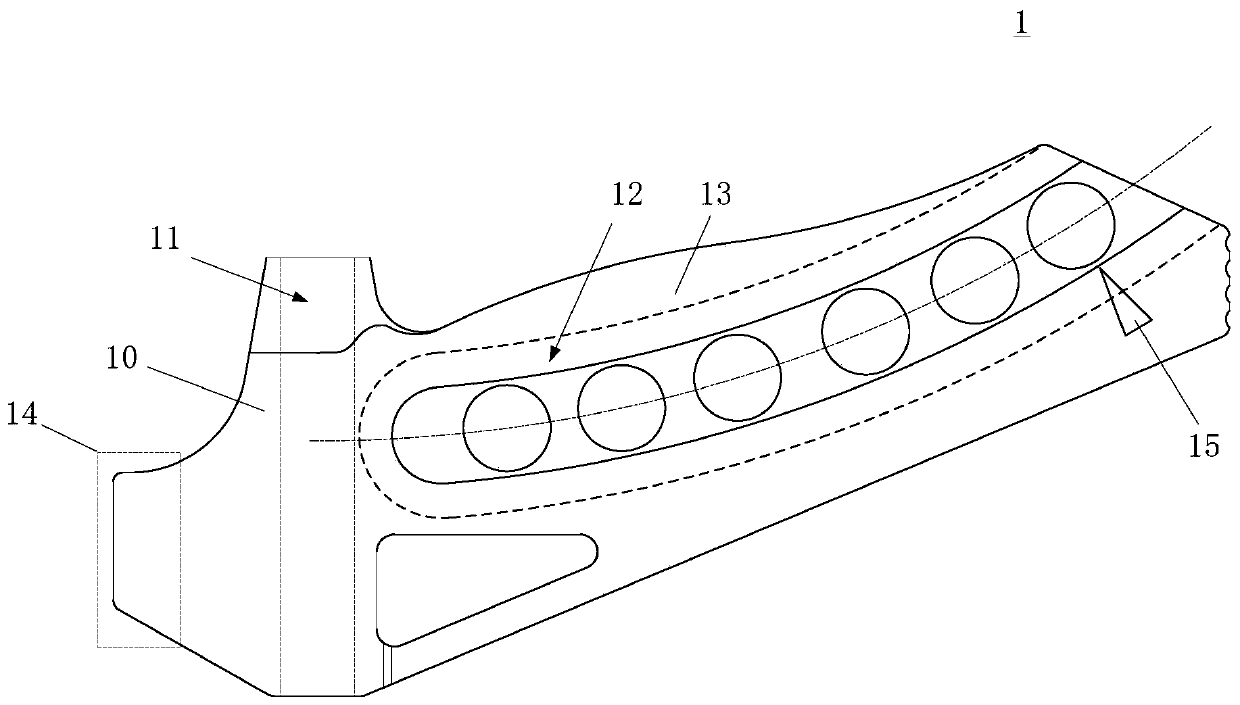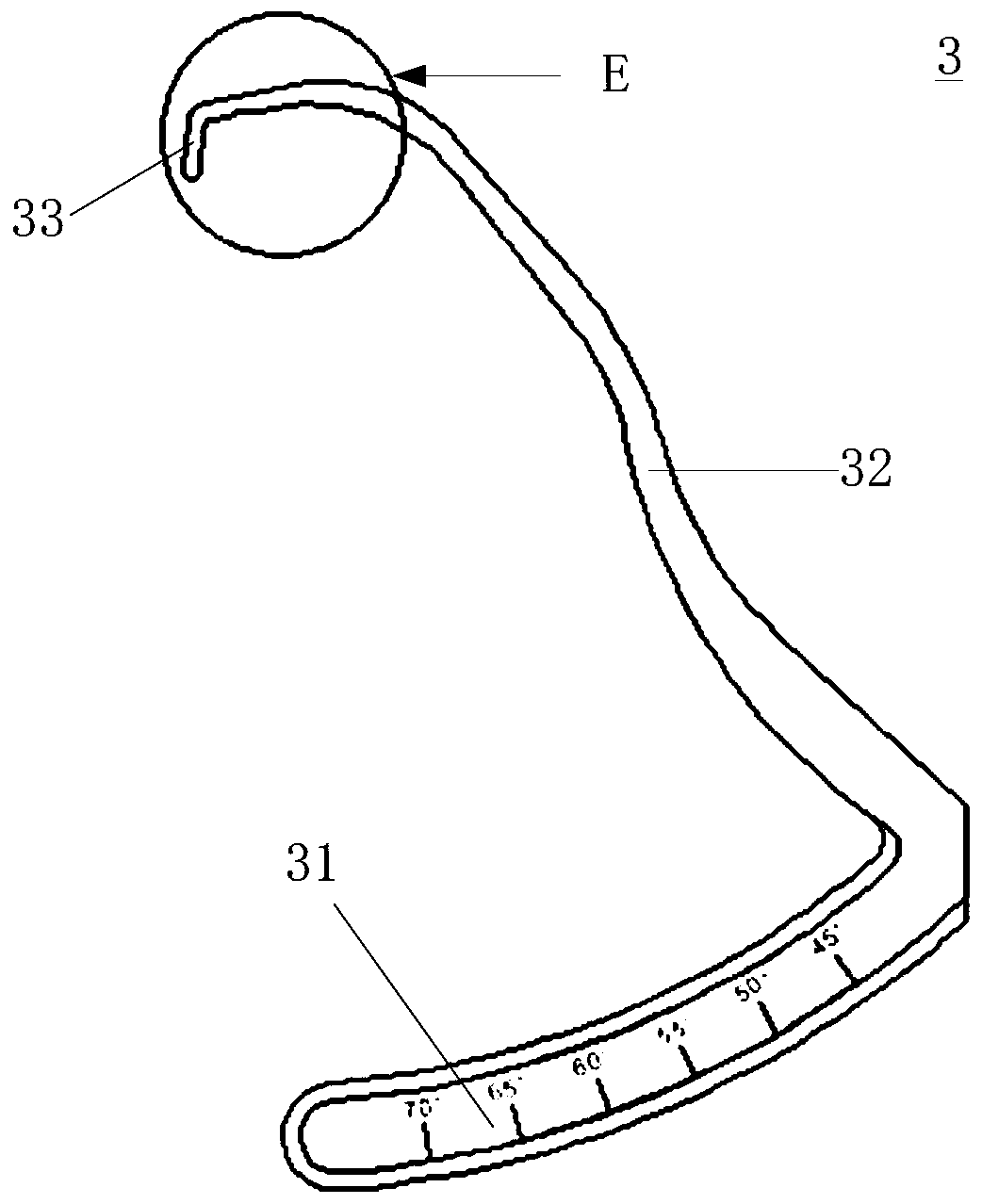Posterior cruciate ligament tibia guider
A cruciate ligament and guide technology, which is applied in the field of medical devices, can solve the problems of poor treatment effect of posterior cruciate ligament reconstruction surgery and large differences in attachment points of posterior cruciate ligament, so as to restore joint stability and improve therapeutic effect
- Summary
- Abstract
- Description
- Claims
- Application Information
AI Technical Summary
Problems solved by technology
Method used
Image
Examples
Embodiment Construction
[0041] In the process of posterior cruciate ligament reconstruction, currently the posterior cruciate ligament tibial guide designed based on the central point positioning method is mainly used to determine the attachment point of the posterior cruciate ligament reconstruction on the tibial plateau. For different surgical objects, it is difficult to find an ideal attachment point using the posterior cruciate ligament tibial guide, resulting in poor therapeutic effect of posterior cruciate ligament reconstruction.
[0042] In order to solve the above problems, the embodiment of the present invention provides a posterior cruciate ligament tibial guide designed according to the eccentric positioning method. The posterior side of the posterior cruciate ligament is more conducive to restoring the function of the original ligament and joint stability.” The anatomy found that the posterior cruciate ligament tibial guide includes a support, a guide rod slidably installed on the support...
PUM
 Login to View More
Login to View More Abstract
Description
Claims
Application Information
 Login to View More
Login to View More - Generate Ideas
- Intellectual Property
- Life Sciences
- Materials
- Tech Scout
- Unparalleled Data Quality
- Higher Quality Content
- 60% Fewer Hallucinations
Browse by: Latest US Patents, China's latest patents, Technical Efficacy Thesaurus, Application Domain, Technology Topic, Popular Technical Reports.
© 2025 PatSnap. All rights reserved.Legal|Privacy policy|Modern Slavery Act Transparency Statement|Sitemap|About US| Contact US: help@patsnap.com



